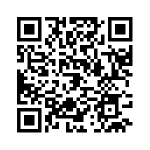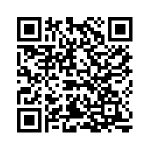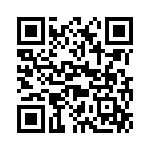49 Resources for Teaching Exceptional Students
Sheri Deaton
Resources for Teaching Exceptional Students
The following resources can be utilized to help you teach students with exceptionalities who are enrolled in your apparel production course. It is important to note that each student may have their own 504 or Individualized Education Plan (IEP), and following these protocols is imperative.
This chapter is intended to complement, never contradict, the plans created by professionals who know and work with your students. Here are a few specific strategies that may help you begin to create a more inclusive classroom.
-
Adapt Tools and Materials
Use adaptive equipment (e.g., larger needles, ergonomic scissors, fabric weights instead of pins) and consider sensory-friendly materials for students with fine motor, visual, or sensory processing challenges. -
Simplify and Scaffold Tasks
Break down complex sewing processes into manageable steps. Provide visual aids, checklists, and step-by-step demonstrations to support understanding and independence. This will not only help your students who are struggling cognitively, but will also be helpful for students who are learning English as their second language. -
Offer Multiple Means of Engagement
Student choice is one of the keys to promoting engagement, so when possible allow for different ways to participate. This could include hand sewing instead of machine sewing, working with a peer, or collaborating with a paraprofessional. Let students choose projects that reflect their interests and strengths. -
Prioritize Safety and Predictability
Above all, ensure clear safety guidelines are explicitly taught and reinforced. Maintain a structured, predictable environment to reduce anxiety and support focus. Consider use of soft music or lighting to reduce anxiety, always promoting an environment that is designed to support each student as they progress.
Using an Interactive Sewing Tool Matching Game for Students with Autism
1. Objective
-
Help students recognize, name, and understand the function of basic sewing tools through a matching game.
-
Support fine motor skills, visual processing, and vocabulary development in a low-stress, engaging format.
2. Materials Needed
-
Laminated cards or digital tool showing images and names of sewing tools (e.g., needle, thread, thimble, scissors, seam ripper, pincushion).
-
Matching board with tool silhouettes or descriptions.
-
Velcro dots (for physical cards) or drag-and-drop interactive version (for tablets/computers).
-
Visual schedule of the activity steps.
3. Pre-Teaching (5–10 minutes)
-
Introduce each tool one at a time using real objects and/or large images.
-
Use clear, simple language and allow for hands-on exploration.
-
Reinforce understanding using consistent visuals (e.g., PECs or icons).
4. Game Instructions
-
Students match the image or name of the tool to the corresponding picture or description on the board.
-
Provide immediate visual or verbal feedback (e.g., “Yes! That’s the thimble!”).
-
Use prompting as needed (e.g., hand-over-hand, verbal cues), fading as students gain confidence.
5. Modifications & Supports
-
Use fewer tools to start (3–4 at a time) and gradually increase.
-
Offer alternative response formats: pointing, selecting from a choice of two, or using AAC devices.
-
Incorporate choice: allow students to pick which tools they want to match.
6. Reinforcement
-
Offer positive reinforcement (e.g., sticker, token, or verbal praise) after each correct match.
-
Include a preferred activity or sensory break after completing a round.
7. Extension Activities
-
Match real objects to pictures.
-
Use the matched tools in a simple, hands-on sewing project (e.g., threading a plastic needle).
-
Sort tools by size, color, or function to build categorization skills.
8. Assessment/Reflection
-
Observe and note student progress with matching accuracy, engagement, and independence.
-
Adjust future sessions based on individual needs and responses.
Hemming it Up
Meeting the needs of all students is at the heart of all that we do, yet sometimes it can be overwhelming when you are considering how to modify for multiple exceptional learners in a classroom full of noisy sewing machines and sharp objects.
If you have any specific strategies that have helped you modify for your exceptional students, please do not hesitate to reach out. I would love to add them to this curated collection of tried and true strategies designed to promote inclusion in the apparel production classroom
Resources
| Resources | QR Codes |
| Matching Sewing Equipment Game
Download, print, glue, and laminate the game and playing pieces. Use manila folders and envelopes for ease of storage and access.
|
 |
| Helpful Apps for English Language Learners
|
 |
| Using Funds of Knowledge in the Classroom
|
 |
References
Deaton, S. (2025). Teaching Apparel Production. Presentation.


